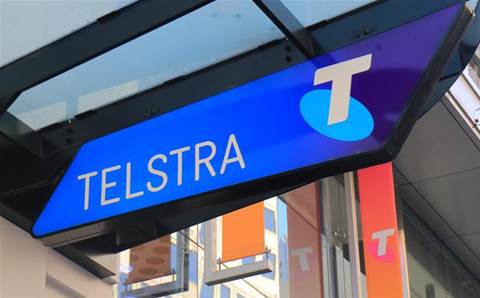Telstra is intending for large-scale permeation of artificial intelligence technology into all corners of its business under the T25 strategy that it will start executing from the middle of this year.
Chief data and AI officer Noel Jarrett told the Mobile World Congress in Barcelona early on Wednesday morning that the telco will scale up its AI efforts considerably.
Jarrett noted that existing AI efforts had been concentrated in the consumer side of the business, and particularly in the areas of customer service.
He predicted an expansion of the use of AI both inside and outside of the consumer division, with the expansion work largely driven by the T25 transformation strategy.
While AI and analytics were called out when T25 was announced in September last year, Jarrett offered a new level of detail on how the technologies would manifest in T25 works.
“Data and AI permeates the entire T25 strategy, completely impacting the way we serve our customers,” Jarrett said.
“[It won’t be] just ‘next-best action’ and those sorts of things, but proactive assurance not only in the consumer market but also in enterprise.
“Secondly we’ve used AI in the way we run our networks for anomaly detection, but we’re now getting into the way we plan our networks - 5G, edge and so forth - and really taking the lid off how we run our business.
“We anticipate every part of our business having AI capabilities running our business in that [T25] timeframe.
“We see a massive change in our business [from data and AI] impacting every part of our business.”
Jarrett said that the number of Telstra staff with direct involvement in data or AI efforts would increase significantly.
“We see a massive increase in the size of the workforce - we’ve put a figure of 50 percent [on that] in terms of the increase in the size of our workforce working on data and AI,” he said.
“As a key component of that, diversity is going to be a really important factor to make sure we’ve got a representative set of people working on and using these tools. Telstra already has an internal data community that operates under the name ‘Helix’ and counts “thousands of members.”
“Our goal is to grow that significantly over the next year or so, and have training and development showcases, data forums and hackathons to really build an energy around using AI in a positive way,” Jarrett said.
Jarrett said that the telco also has set up a number of oversight bodies and guardrails designed to help different parts of the Telstra business safely adopt AI and create data-driven models.
“We have a number of levels of governance in our organisation,” he said.
“We have a group, the acronym is RCAID which stands for the risk council for AI and data, and that’s where we operationalise the way we’re using AI and they enact our AI policy in the company.
“We also have a peak body which is the Data and AI Council, and that is a set of executives across Telstra representing each one of the businesses to understand what each of the businesses is doing, and they’re supported by our corporate functions in terms of legal, cyber security, reputation and so forth.
“We also engage our group executives on a regular basis to make sure they’re informed as well [as to our directions on AI and data modelling].”
He noted that there is an internal effort currently underway, however, to make it simpler to meet the checks and balances now required when new products are being assembled.
“Within our product and technology team, we’ve just created a unit that’s focusing specifically on AI - the products we create using AI, the products we take to market, and [we have] a person leading that team,” Jarrett said.
“It’s not just AI but also other factors. The world is changing so much, whether it’s carbon footprint from a product or AI, all of those factors have got to come into the design of a product.
“We’re actually in the process right now of redesigning our product creation process to take all of those inputs [into account], because what you don’t want to do is have hurdle after hurdle after hurdle to get a product to market, because each hurdle takes time and before you know it the product’s out of date.”
Jarrett cited the cyber security area of Telstra as one that could benefit from this effort, potentially streamlining the path to market for new products.
“Cyber security has quite a number of really important requirements to build into a product along with AI, so we worked closely with each one of those different stakeholder groups to look at where the common ground is, make as much of the product creation process common as we possibly can, and only have a few exceptions where they’re absolutely needed, to make it as easy as possible for the folk in our product and technology unit to be able to get those products to market as quickly as possible,” he said.








_(11).jpg&h=142&w=230&c=1&s=1)

.jpg&w=100&c=1&s=0)
_(8).jpg&w=100&c=1&s=0)







.jpg&q=95&h=298&w=480&c=1&s=1)





